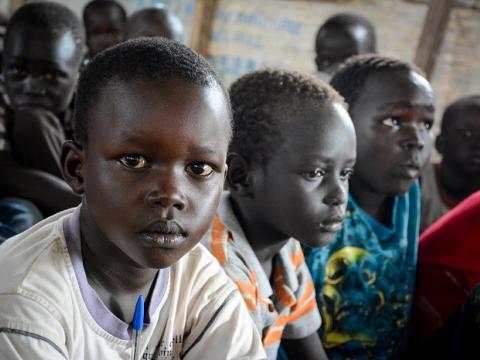Global leaders must stop the war on education

On July 6 and 7, leaders in global education gathered in Oslo, Norway for the Oslo Summit on Education for Development. Following on the heels of the World Education Forum in Incheon, Korea in May, the goal of the Oslo Summit was three-fold:
- To build on the outcomes of the World Education Forum outlined in the Incheon Declaration;
- To provide input into the third International Conference on Financing for Development in July; and
- To think ahead to the United Nations General Assembly in September where the new Sustainable Development Goals (SDGs) will be adopted.
Through the Oslo Declaration, world leaders committed to improve how aid is provided in emergencies and to urgently address the gap in funding in education in emergencies. A new international commission to reverse the recent declines in global education was also announced.
A cup half full
In concert with the Oslo Education Summit, the final Millennium Development Goals Report 2015 was released on July 6. It revealed MDG 2 which aimed to achieve universal primary education saw the number of out-of-school primary-aged children almost halve to 57 million. This is a staggering feat and should be a rallying cry for the SDGs. We know when the global community bands together, we can make measurable change in children’s lives.
However, gaps continue to exist between rich and poor. According to the MDG Report, the poorest children are four times as likely to be out of school as those in the richest households. Further, girls, those in rural areas, with disabilities or living in conflict or emergency zones remain largely out of reach.
The war on education
Across the board, the biggest threat to human development is conflict. According to the United Nations, by the end of 2014, war had forced almost 60 million people from their homes; the highest level recorded since World War II. Children account for approximately half of the global refugee population.
Across the board, the biggest threat to human development is conflict.
Out-of-school children, particularly those displaced by conflict, face extreme protection risks such as increased vulnerability to exploitation, abuse, early marriage, child labour and recruitment into armed forces and groups. Schools and school children are continually under attack.
For example, since the outbreak of conflict in South Sudan in late 2013, an estimated 400,000 children have been forced to drop out of school. According to UNICEF, over 13,000 Southern Sudanese children have been forcibly recruited into armed groups on both sides of the conflict.
In Syria, conflict has had a devastating impact on children’s education. According to Data from the Syrian Ministry of Education and included in the MDG report, enrolment rates had fallen by 34 per cent at the end of 2013. For Syrian refugee children of primary and lower secondary school age in Lebanon, the enrolment rate is estimated to be as low as 12 per cent.
In 2014, only 1 per cent of humanitarian aid went to education in emergencies.
Education in disaster contexts can be a critical, life-saving and protective response activity. It offers a safe place for children to learn, play and rebuild important social relationships. It should be a priority investment in conflicts and protracted crises. However, in 2014, only 1 per cent of humanitarian aid went to education in emergencies. The responsibility for providing education to those children whose lives literally depend on it, continues to slip through the cracks between development financing and emergency humanitarian aid.
Education cannot wait
World Vision, along with more than 30 other leading NGOs, joined forces with A World At School to call on global leaders to publically commit to the creation of a Global Humanitarian Fund for Education in Emergencies during the Oslo Summit.
The commitment of world leaders in the Oslo Declaration is commendable. Our voices were heard and improvements to emergency aid and funding for education in emergencies will be explored. This is the first step, but the hard work lies ahead. World leaders are accountable to children to deliver on the promises they’ve made.
The new SDG framework must commit to ending all forms of violence against children, and include targets on increasing access to quality education for the most vulnerable children with emphasis placed on those affected by conflict.
We must remember that the millions of children caught up in crises not of their making will grow up to be the ones responsible for rebuilding their nations. Quality education can help lead to a new era of peace, and continued momentum towards a world where children are educated for life.
Related links:
- Why isn’t there enough? Two ideas to transform humanitarian financing
- World Vision says final MDG report will confirm worst fears
- Will post-2015 education goals be enough for the world’s most vulnerable children
Linda Hiebert is the Senior Director, Education and Life Skills at World Vision International. She has over 25 years of experience in international development, including work as programme officer, director and vice-president in a number of countries and regions. Linda has a Bachelor's degree in Nursing, and a Master's degree in Development from Harvard's Kennedy School of Government.
Follow Linda on Twitter @LindaHiebertWV.